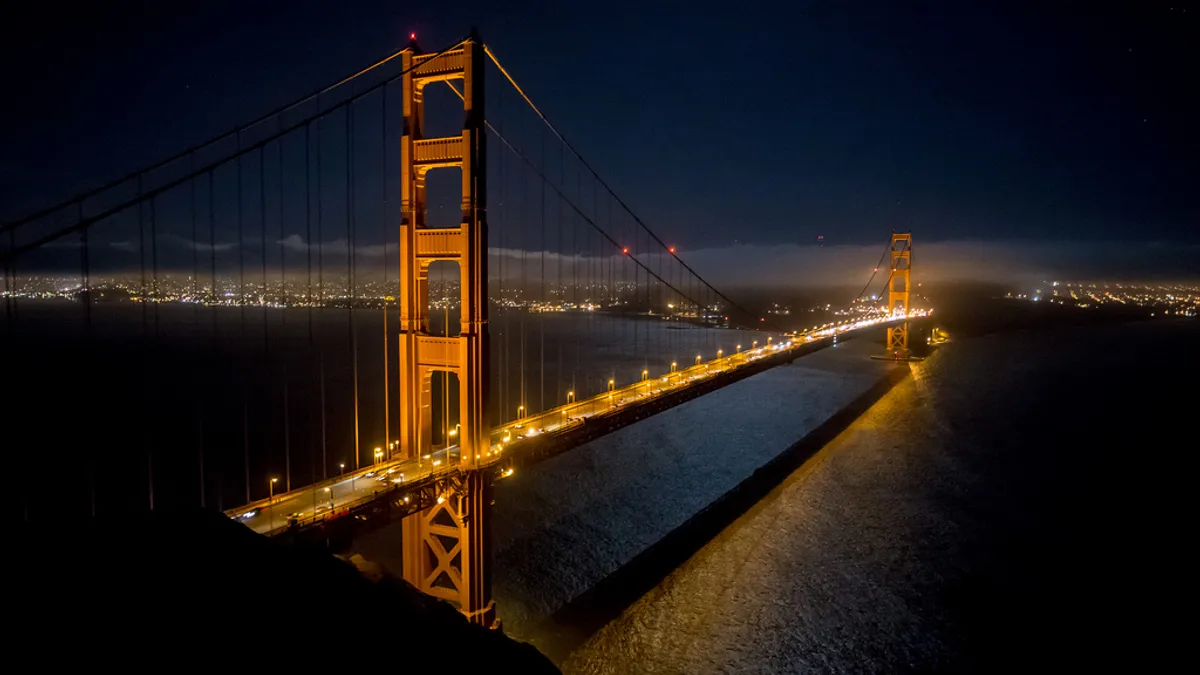Dive Brief:
- California utilities are well-ahead of the state's renewables portfolio standard — already the most aggressive in the nation — and by some accounts may be supplying 50% carbon-free energy a decade ahead of schedule, according to a new report from California Public Utilities Commission (CPUC).
- As of this year, 43.2% of San Diego Gas & Electric's energy supply comes from renewable resources; 32.9% for Pacific Gas & Electric; and 28.2% for Southern California Edison.
- CPUC's report also concludes the state's aggressive RPS program has helped drive down the costs of renewable energy. Between 2008 and 2016, the price of utility solar contracts declined 77%. Between 2007 and 2015, prices of wind contracts reported to the CPUC have declined 47%.
Dive Insight:
Its been 15 years since California regulators directed utilities to include renewables into their energy mix, and in that time, much progress has been made. The state is now targeting 50% renewable power by 2030 and could reach that much sooner.
But the report yesterday finds utilities well ahead of even interim targets, and possibly on their way to supply 50% green power within the next three years. CPUC Commissioner Clifford Rechtschaffen, who oversees the agency's renewables standard proceeding, touted California's position as a national leader on climate.
"Our utilities are exceeding the goals we put in place for them," Rechtschaffen said. "Costs have continued to decline, and reliability has not been compromised in any way. California’s successful program offers lessons for other states interested in advancing clean energy policies.”
There have been signs the state could push even farther. Over the summer, California lawmakers considered setting interim goals that could lead to 100% renewable energy by 2045.
California Gov. Jerry Brown (D) was in Germany on Monday for international climate talks. "We don’t want to do nothing and just sit there and let the climate get worse,” he told the San Francisco Chronicle. With one of the largest economies in the world, the state has taken up the mantle as a leader on fighting climate change, even as the federal government has pulled out of the Paris climate accord, aimed at keeping global warming under control.














